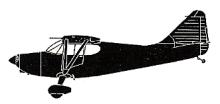
ASN Wikibase Occurrence # 289143
This information is added by users of ASN. Neither ASN nor the Flight Safety Foundation are responsible for the completeness or correctness of this information.
If you feel this information is incomplete or incorrect, you can submit corrected information.
| Date: | Tuesday 5 July 2011 |
| Time: | 11:19 LT |
| Type: |  Stinson 108-2 |
| Owner/operator: | Nicholas K Riney |
| Registration: | N9351K |
| MSN: | 108-2351 |
| Total airframe hrs: | 2374 hours |
| Engine model: | Franklin 6A4165 SERIES |
| Fatalities: | Fatalities: 0 / Occupants: 2 |
| Aircraft damage: | Substantial |
| Category: | Accident |
| Location: | Columbia, California -
 United States of America United States of America
|
| Phase: | Initial climb |
| Nature: | Executive |
| Departure airport: | Columbia, CA (O22) |
| Redding Airport, CA (RDD/KRDD) | |
| Investigating agency: | NTSB |
| Confidence Rating: |
The day before the accident flight, the pilot examined the airplane and discovered water in the fuel tanks. He drained the water and filled the fuel tanks in preparation for the upcoming delivery flight to the owner. The pilot and his passenger departed the airport, which is approximately at sea level, and made an uneventful flight to an airport about 270 miles away at an elevation of 2,118 feet. After refueling, the pilot observed other airplanes departing on runway 17 but decided to use runway 35 due to his observation of wind conditions, which indicated very light wind from the north. The pilot's observation of the wind direction was not supported by the recorded meteorological data, which indicated a 3-knot wind from 230 degrees. However, a note for the airport in the FAA Airport/Facilities Directory stated that "Varying wind direction and velocity may be encountered at midpoint of Rwy 17–35 due to terrain features and wind flow patterns"; therefore, the actual wind conditions at the time of the airplane's departure could not be determined. At the time of the attempted takeoff, the temperature was 34 degrees Celsius, resulting in a density altitude of about 4,860 feet. The pilot reported that the engine runup was normal and that the takeoff seemed normal until the airplane reached the end of the runway, where the climb performance deteriorated. The airplane was unable to clear the obstacles beyond the end of the runway, impacted trees and terrain, and came to rest about 1,600 feet beyond the runway end. A postimpact fire consumed much of the airframe and all of the baggage, which included some of the airplane's records.
After the accident, the pilot reported that the takeoff and climb for the previous flight was normal but that during cruise, the airplane seemed to operate at a higher pitch attitude than expected. The condition of the wreckage precluded any evaluation of the primary factors, such as wing or control surface rigging or the accuracy of the tachometer or airspeed indicator, that could have accounted for the reported phenomenon.
According to the data presented in the published airplane performance information, takeoff and continued flight should have been possible. However, the expected takeoff and climb performance could not be accurately determined because it was not possible to account for multiple differences between the performance data baseline conditions and the actual or reported conditions, such as airplane weight, runway slope, flap setting, and speed. The pilot did not report any engine roughness or rpm loss; therefore, the event was not consistent with water ingestion by the engine. Examination of the engine revealed compression deficiencies in some cylinders, but it could not be determined whether those were present before the accident and fire. While examination found no evidence of any definitive preimpact mechanical malfunctions or failures that would have precluded normal climb and continued flight, the postaccident state of the airplane prevented complete evaluation and analysis of all possible scenarios.
Probable Cause: The airplane's failure to climb at a sufficient rate to clear trees and terrain beyond the end of the runway for reasons that could not be determined because postaccident examination did not reveal any mechanical malfunctions or failures that would have precluded normal operation.
Accident investigation:
 |
|
Sources:
NTSB WPR11LA307
Location
Revision history:
| Date/time | Contributor | Updates |
|---|---|---|
| 05-Oct-2022 10:17 | ASN Update Bot | Added |
Corrections or additions? ... Edit this accident description
The Aviation Safety Network is an exclusive service provided by:


 ©2024 Flight Safety Foundation
©2024 Flight Safety Foundation